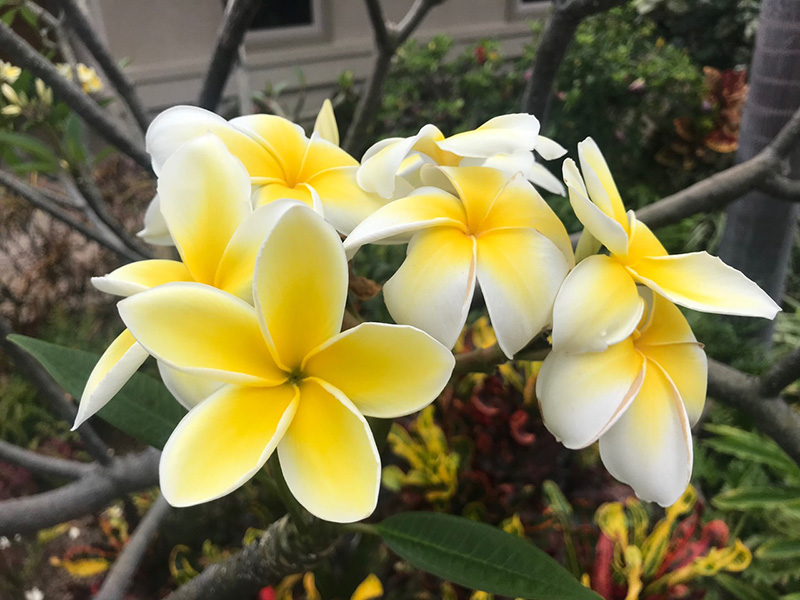THE ISLAND IS HOME
TO A DIVERSE RANGE OF FLORA
Much like the wildlife that live here, there is a large variety of flora on the Big Island. The plants that grow here fall into three different categories: endemic (only found in Hawaii), native and foreign species. There is no doubt you’ll see examples of all of these during your stay. Here are some notable species to look out for:
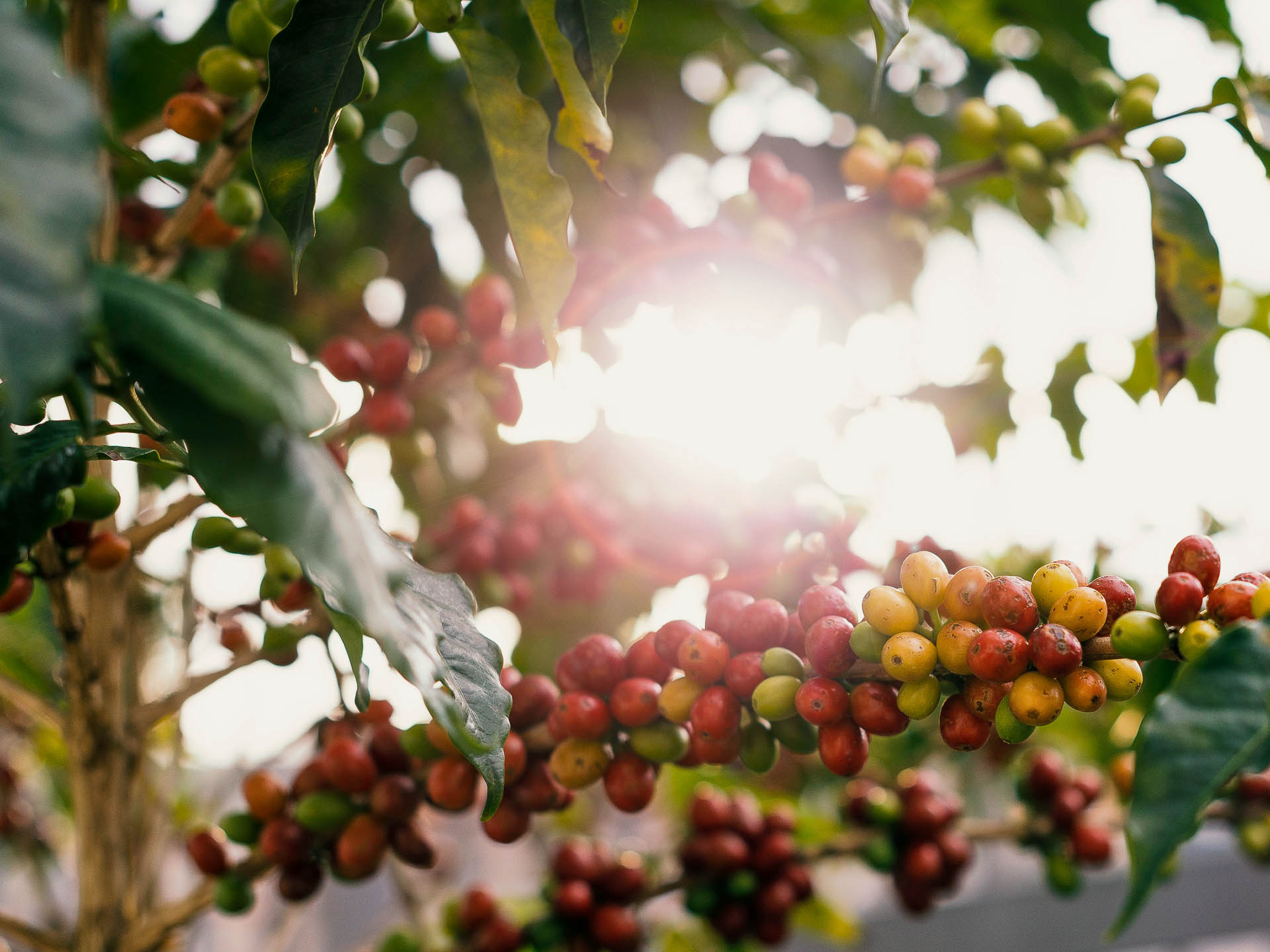
Coffee
Coffee was brought to the Kona district in 1828 from Brazilian cuttings by Samuel Reverend Ruddles. Since then Kona coffee is known for its quality and is one of the most expensive coffees in the world. Kona coffee trees bloom with small white flowers, known as “Kona snow” in February and March. In April green berries begin to appear and by late august the red fruit, known as the “cherry” start to ripen for picking. Picking occurs between August and January. Each tree produces about 15 lbs of cherry, which results in about two pounds of roast coffee beans. If you want to learn more about coffee farming (and taste some samples) consider a trip to the Kona Coffee Living History farm.

‘Ohi’a lehua
These trees are endemic to the Hawaiian Islands. They are often the first life in fresh lava flows and is the most abundant Hawaiian tree. Their tiny seeds are spread easily on the wind. They sport silvery-green leaves and pom-pom like red flowers, or lehua. These flowers are sacred to the Hawaiian Volcano Goddess, Pele. Their size can vary greatly, with the tallest being able to reach 100 feet tall. Ancient Hawaiians used ‘ohi’a wood to carve temple idols, canoes, poi bowls, and spears. They grow between 1,000 and 9,000 feet in elevation.
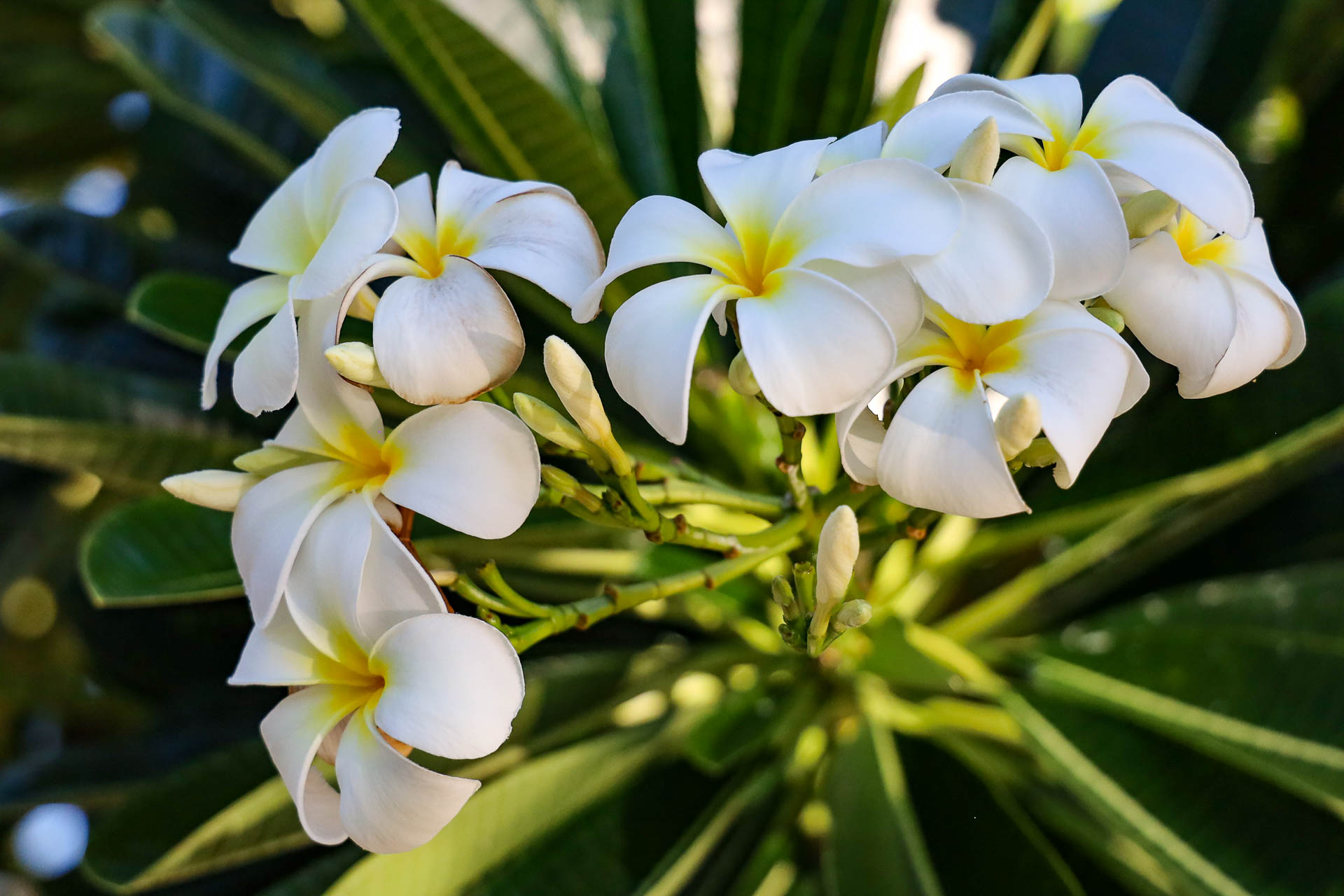
Plumeria
These flowers have many color variations and are a favorite for use in Hawaiian leis. There’s a common understanding in modern Polynesian culture that a plumeria worn on a particular side above the ear expresses a woman’s relationship status—worn over the left ear indicates “taken” (closer to the heart), and over the right means “available”. These flowers are non-native, originating in Southern Mexico, and were brought to the Island in 1860. Since they prefer hot, rocky areas with dry to moderate rainfall they took to the Big Island quite well.
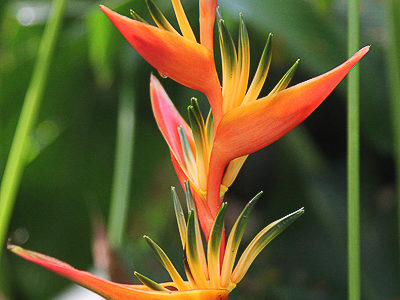
Birds of Paradise
This ornamental plant is so-called because of its dramatic flowers’ resemblance to the head and beak of an exotic bird, as well as a bird in flight. This stunning flower originated in South Africa. It is a common garden plant, as well as ideal for flower arrangements, due to its long-lasting nature when cut.
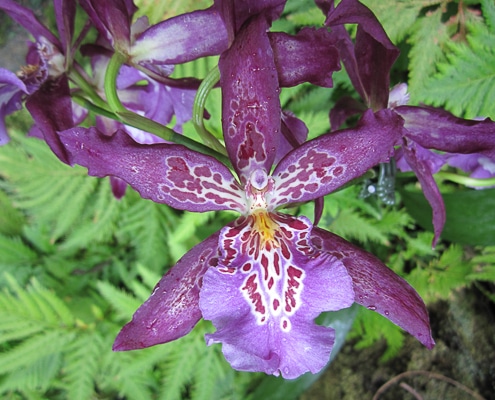
Orchids
There are three types of orchids that are native to Hawaii. They are more subdued in color and grow in the highest areas of the Island’s forests and bods. The best place to find them is in Hawaii Volcanoes National Park or the wet forests on the East side of the Island, although they are quite rare. More varieties have been cultivated and are used commercially. The most common lei orchid is the purple dendrobium. Orchids have become the most important commercial flower in the state, and are sold as cut flowers, leis and potted plants. You can visit the Akatsuka Orchid Gardens in Volcano and take a guided tour of their showroom & greenhouse.
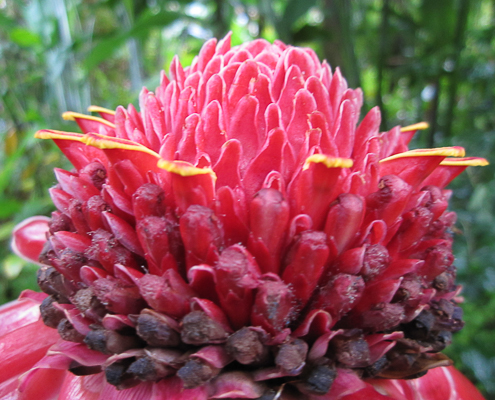
Ginger
There are many varieties of ginger, with white and yellow being the most fragrant. These plants usually found in clumps and can grow up to 7 feet tall in rainy areas. They’ve documented 26 species of ginger in Hawaii, you’re like to see common varieties such as red ginger, shell ginger and torch ginger (pictured here). These are seasonal flowers that bloom between spring and fall. The different varieties of ginger were introduced to the Island in the 19th and 20th centuries from Southeast Asia as ornamentals, and some species like red button and Himalayan ginger are considered invasive plants.
Koa
Also known as “Hawaiian Mahogany” these massive trees can grow to 70 feet tall and 10 feet wide. Their saltwater resistance made them a choice material for boats, canoes and surfboards. It is endemic to the Hawaiian Islands, and while there used to be many Koa trees across the Islands the majority are now found in reserves. Koa wood used in souvenirs and other products comes from commercial Koa plantations to protect the remaining population. You can find some hardy Koa trees in Hualalai and in the preserve of Volcanoes National Park.
Macadamia
Macadamia nuts are the Big Island’s second largest signature crop, with over 17,000 acres of Macadamia trees. 90% of all macadamia nut harvests in the world today happen in Hawaii! These plants originated in Australia and were brought to the Big Island in 1881 and became a popular crop among the sugar plantation barons. It wasn’t until the late 1940s that large companies took notice and began to commercially produce these nuts. The Hamakua Macadamia Nut Company in Kawaihae has a visitors center you can enjoy free samples and tour the processing plant. If you’re up for a bit of a drive the Mauna Loa Macadamia Nut Corporation has a visitor center in one of their orchards on the Northeast side of the Island. The drive takes you through the orchard, and at the center you can view the processing of the nuts, the creation of products and try some samples!
Visit our Botanical Gardens page to learn about the Hawaii Tropical Botanical Garden, a great place to see a large variety of Hawaiian flora in a natural “greenhouse”!
We recommend contacting organisations directly to get the most up to date information about their operations.





